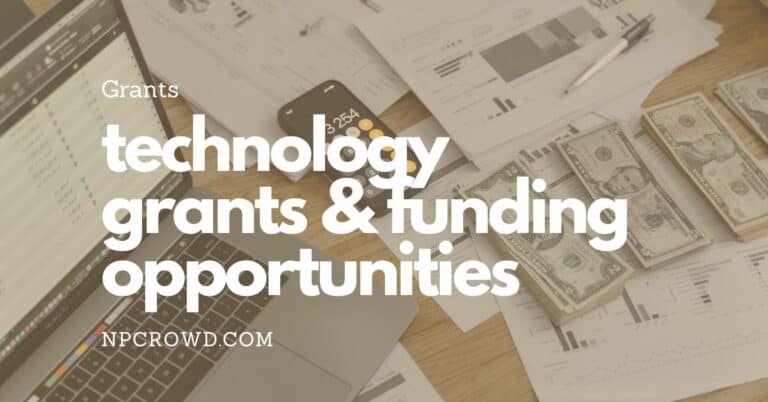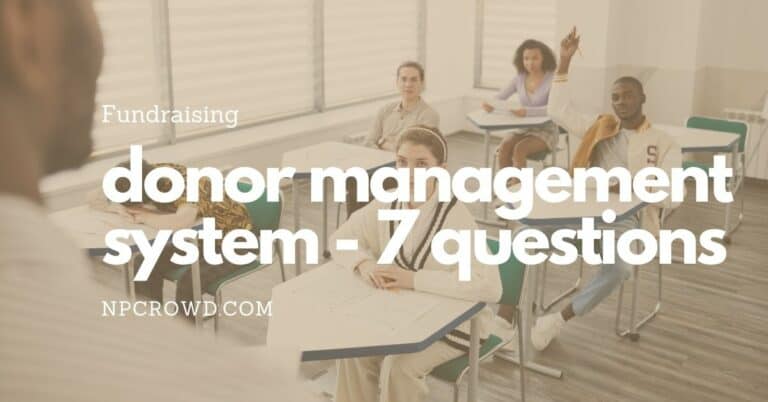The 4 P’s for Nonprofits: A Comprehensive Overview
Disclaimer: This post may contain affiliate links. These links, if used and purchases made, we may earn a small commission. These affiliate programs do not impact the recommendations we make or the resources we refer you to. Our focus is on providing you the best resources for your nonprofit journey.
The 4 P’s marketing model, traditionally used in businesses – product, price, promotion, and place – finds its unique interpretation in the nonprofit sector. Here, the “4 P’s” stand for product, price, promotion, and people. These elements, when strategically considered, can make a significant difference in how nonprofits operate, attract support, and achieve their goals. This article explores each of these aspects in detail.Product: Defining the Offerings
In the nonprofit context, the ‘product’ isn’t a physical item for sale but the mission, programs, and services provided by the organization. This can range from mental health services to education initiatives, or environmental conservation efforts. Each product must meet the needs or solve problems of the community served, differentiating it from similar services offered by other organizations.
In order to design the product effectively, nonprofits need to understand their target community’s needs. This understanding can be gained through research, community outreach, and listening to the voices of those who they serve. Furthermore, it’s essential to ensure that the programs and services offered align with the organization’s mission and core values.
Price: The Donation Equation
In a nonprofit setting, ‘price’ refers to the financial donations or contributions made by supporters. While these donations are voluntary, they’re vital for funding operations and maintaining the organization. The ‘price’ should take into consideration what donors can afford, the value they perceive in the ‘product,’ and the amount needed to sustain the organization’s work.
Setting the ‘right’ donation levels can be a complex process. Nonprofits need to balance their operational needs with the economic realities of their supporters. Transparency about how donations are used can significantly increase donors’ willingness to contribute, as they understand the direct impact of their support.
Promotion: Communicating with Impact
Promotion encompasses all the activities a nonprofit organization undertakes to raise awareness, generate interest, and inspire action. This can include traditional marketing methods like advertising and public relations, as well as digital strategies like social media marketing, email campaigns, and content marketing.
Promotion is not just about the quantity of exposure, but the quality of the message. It’s about telling compelling stories that resonate with potential supporters, effectively demonstrating the need for their services and the positive impact they can create. Furthermore, it should communicate how supporters’ involvement contributes to the organization’s mission, fostering a sense of shared purpose.
People: The Heart of Nonprofit Work
The final ‘P’ stands for people – the staff, volunteers, donors, and community members who bring a nonprofit’s mission to life. Their contributions, commitment, and passion drive the organization’s work and impact.
Building strong relationships with these stakeholders is crucial. This can involve providing meaningful volunteer opportunities, recognizing contributors, maintaining open communication, and fostering a sense of community. By nurturing these relationships, nonprofits can build a solid base of support that lasts.

Looking Beyond the 4 P’s
While the 4 P’s offer a useful framework for developing a marketing strategy, it’s not an exhaustive list of what nonprofits need to consider. As the nonprofit sector continues to evolve, it’s crucial to adapt and incorporate other factors like technology, accessibility, and sustainability. Nevertheless, the 4 P’s serve as a solid foundation for understanding and executing effective nonprofit marketing strategies.
FAQ
Q1: Why is understanding the ‘product’ crucial for nonprofits?
A: Nonprofits’ ‘products’ are their programs and services. A clear understanding of these offerings helps communicate their value to potential supporters, differentiate them from other nonprofits, and meet the needs of the community they serve.
Q2: How should nonprofits approach ‘pricing’ or donations?
A: Nonprofits need to set donation levels that are realistic for their supporters, but also sufficient to fund their operations. Transparency about how funds are used can help to increase donor trust and willingness to give.
Q3: What should nonprofits keep in mind when promoting their work?
A: Promotion should not just be about quantity, but quality. Nonprofits need to tell compelling stories that resonate with potential supporters, showing the need for their services and the positive impact they can create.
Q4: How can nonprofits build strong relationships with people?
A: Nonprofits can build strong relationships with their stakeholders by providing meaningful engagement opportunities, recognizing their contributions, maintaining open communication, and fostering a sense of community.
Q5: Can nonprofits rely solely on the 4 P’s for their marketing strategies?
A: While the 4 P’s provide a useful framework, it’s not exhaustive. Nonprofits also need to consider factors like technology, accessibility, and sustainability in their marketing strategies.
Sources
- Kotler, P., & Levy, S. J. (1969). Broadening the concept of marketing. Journal of Marketing, 33(1), 10-15.
- Andreasen, A. R. (2008). Strategic Marketing for Non-Profit Organizations. Prentice Hall.
- Sargeant, A. (2009). Marketing Management for Nonprofit Organizations. Oxford University Press.
- Dolnicar, S., & Lazarevski, K. (2009). Marketing in Non-Profit Organizations: An International Perspective. International Marketing Review, 26(3), 275-291.







